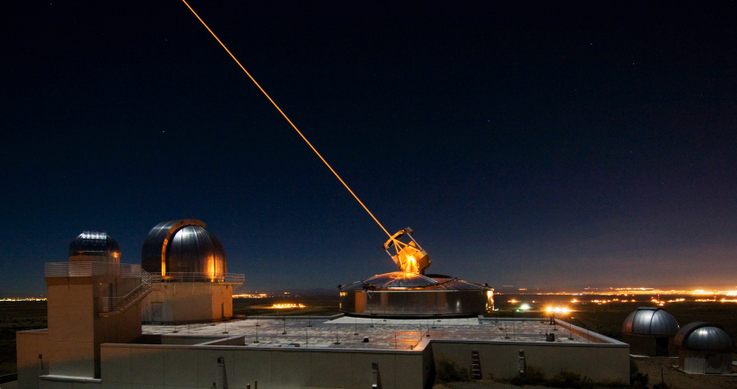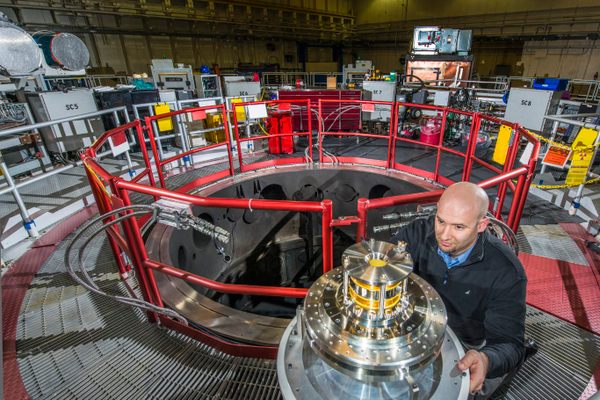AO Edited
Starfire Optical Range
The U.S. Air Force has an anti-satellite laser weapon.
The U.S. Air Force has one of the most advanced directed-energy research facilities in the world, in the desert eight miles outside of Albuquerque. The Starfire Optical Range at Kirtland Air Force Base has the dual mission of pursuing cutting-edge astronomical research and developing anti-satellite laser weapons.
The pride of Starfire is an 11.5-foot “weapon-class” telescope that can peer far into the heavens or be used to direct powerful laser beams. According to a 2006 New York Times interview with unidentified Bush administration officials, the telescope “take[s] advantage of an optical technique that uses sensors, computers, and flexible mirrors to counteract the atmospheric turbulence that seems to make stars twinkle.”
“The lightweight, honeycomb-sandwich primary mirror weighs 4,500 pounds and has a one-inch-thick glass face sheet,” the Air Force writes. “The surface is precisely polished to 21 nanometers—3,000 times thinner than a human hair. The mirror is supported by 56 computer-controlled actuators to maintain its shape while the telescope is moving.” The facility can aim its lasers close to a target star, and then use them as points of comparison to rapidly and continuously flex the telescope’s mirror to increase clarity. The Starfire Range also goes to great lengths to minimize thermal interference with their telescope—with a 30-foot-deep pit underneath that can hold 4.5 million pounds of ice. Ice is favored over traditional air conditioning since AC units themselves release heat that can still distort the laser.
In addition to its excellent scientific capabilities, Starfire has a second mission: killing satellites. Details are scarce, but the military application of a directed-energy beam of sufficient scale and power isn’t hard to imagine. It might look like the Boeing flying laser plane that was designed to shoot down ballistic missiles. The now-canceled project used chemical oxygen-iodine laser (COIL) technology that was invented at the Starfire Range.
Know Before You Go
The Starfire Optical Range is located at Kirtland Air Force Base. It is not normally open to the public.




















Follow us on Twitter to get the latest on the world's hidden wonders.
Like us on Facebook to get the latest on the world's hidden wonders.
Follow us on Twitter Like us on Facebook